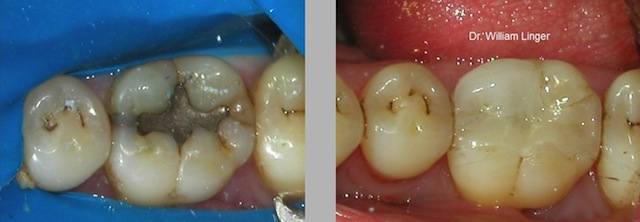How Much Does A Filling Cost?
Many people are amazed to learn that 80% of American dentists are still using the Mercury based filling materials also know as Amalgam. These materials require less skill by the dentist and are less expensive to place. However, they are 50% Mercury and are not bonded to the tooth.
This metal material will expand and contract over time creating a leak that allows decay inside the tooth, or cause stress and fracture the tooth. Amalgam fillings require a large amount of material for strength. This means that a lot of health tooth removal is needed to create a large space for the filling, and that weakens the tooth. For these reasons, Dr. Linger has not placed Amalgams in over 20 years.
Composite fillings are usually more expensive than traditional amalgam fillings because they require a more sophisticated process, more expensive materials, and additional office equipment.
This material does not require excess removal of tooth structure for strength, so Composite materials offer an aesthetic alternative to traditional amalgam materials. As such, people who have previously received amalgam fillings often return to their dentist to have them replaced with composite.
The cost of dental fillings depends on a variety of factors, including:
- The size of the filing. The larger the filling, the higher the cost
- The dentist who performs the procedure.
- The location where it is performed.
- The type of dental insurance you have. Dental insurances encourage the use of Mercury containing fillings, and typically do not cover as much of the cost of composite filling.
- The number of tooth surfaces that need filling. For example, one tooth may have only one surface affected by decay or damage, while another tooth may have one or all surfaces affected by decay or damage.
If done correctly, composite fillings will last many years. Over the years we have seen the quality of amalgam fillings decrease to save costs, and therefore shortening their life span. Composite fillings can also restore heavily damaged teeth without the need for crowns. This, of course, is dependent on your unique considerations, the care with which you treat your oral hygiene and your commitment to continued dental visits.
The cost for amalgam averages approximately $150 to $350 per filling, whereas the cost for resin-based composite, ranges on average from $225 to $850 per tooth.




